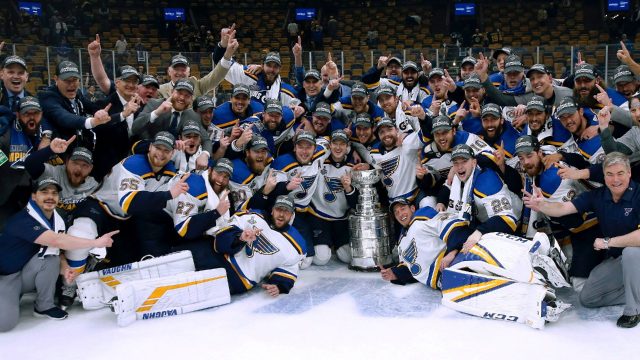
There are good debates to be had about how long to run with any hockey strategy that didn’t work during one single game, particularly when you’re in a playoff round – and particularly when that round is just five games long. You can’t afford to make the same mistake twice, but are you certain what took place in that game was a “mistake,” and not just a product of random hockey circumstances?
Like Sheldon Keefe, I didn’t mind the Leafs’ performance in Game 1. There are breakdowns for every team in every game, but they were generally tight and structured – particularly compared to what you’d call “normal” for their roster – and some good offensive chances didn’t quite get converted. If the Leafs can defend like they did in Game 1, you have to believe the combination of Auston Matthews, Mitch Marner, John Tavares and William Nylander are going to score some goals, to say nothing of Kasperi Kapanen, Alexander Kerfoot, and Ilya Mikheyev.
If you’re making hard decisions about what to do with the Leafs next, you have to believe that. The whole premise of what they are is built around those guys scoring, so yeah … you have to believe that.
But if you aren’t entirely sold there, you come to the whole “there’s good debate to be had” thing, and I’ll be honest, I can definitely see one being had behind closed doors. In my time on a Kyle Dubas staff I saw him repeatedly parrot a mantra created and lived by in the pages of the book “The Only Rule Is It Has To Work.”
In that book two statistical analysts are offered the chance to run a minor league baseball franchise the way they see fit — however they want — with their only internal policy being the only rule is it has to work. That’s how all their plans were guided and Dubas subscribed heavily to that thinking at the time I was around him.
So we’d have ideas with that Marlies team where Dubas was the GM. What about a five-forward power play? Playing a D at forward? Having everyone play their off-hands?
Yes, yes, and yes, he was fine with any and all of it.
Provided it worked.
[radioclip id=4943634]When we gave up three shorthanded goals in the two games we rolled out a five-forward PP, well, that didn’t qualify as working.
Which loops us back to the current Leafs, and their defensively sound play, and their … shutout loss. How they played didn’t work, even if you believe in your scorers. So, should you continue to bank on those stars to score without loosening their tethers a bit from defensive commitment?
I’m here to make the case that they don’t need to change much of anything, strategy-wise. Not yet. With no additional risk, tape from Game 1 shows that an offensive tweak should lead to more O-zone time, which should mean more shots and chances, and with those threats, more power plays. With the talent the Leafs have, a small uptick in O-zone time should make the difference.
The tweak that needs to be made is simple: “short support.” This is not revolutionary thinking, but it does take a less hopeful mindset, as it attempts to take control of the game without needing chance to fall in your favour. A few of the Leafs scorers play in a way that hopes for error on the other side, then capitalizes on it. Short support is a different kind of thinking for a Leafs team that likes to spread out their offence, go weak side, spread the rink with boards-to-boards passes, and generally try to pull teams apart.
Columbus doesn’t get pulled apart – at least not in Game 1, so, abort, abort, abort.
Here’s what I tweeted after the second period of Game 1 – check out the video, then I’ll show you in each clip what I mean.
G1P2 Note: Leafs spent the bulk of the period trying and failing to “get the corner,” as you see in the first two clips. Bigger point, is they’re playing well, but struggling to get the inside against an extremely sound CBJ defence. pic.twitter.com/ZtCOsugJih
— Justin Bourne (@jtbourne) August 3, 2020
A lot of my analysis from Sunday night centred on the theme of the Leafs needing to “get inside.” Because Columbus is structured, they’re content to keep their opponents out on the yellow paint, where coaches like to say “If they get shots from there that go in, we’ll change the goalie, not the system.” They don’t let much through that inside ice, thanks to diligent switching, hard work and good communication.
There are four clips in that tweet above, so let’s talk about how they could’ve been executed differently.
The arrow is a subtle hint at my thinking here.
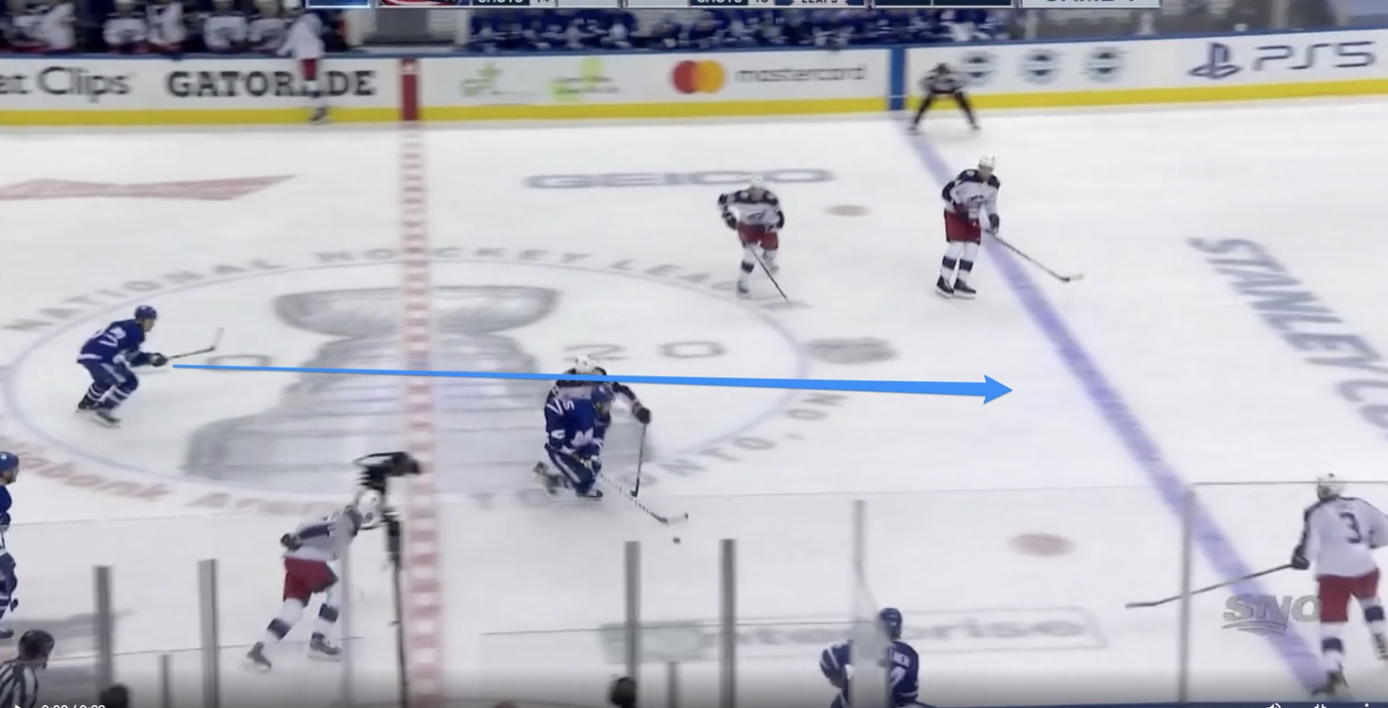
Here, Kapanen is posted flat-footed on the wall (at the bottom) as Kerfoot lugs the puck up the ice. He’s not able to get much speed to help in the immediate rush, but Nick Robertson is coming up the ice from behind and he can. A goal scorer knows that following the arrow I’ve shown here means taking contact, little space, and likely no immediate reward. But it can offer a teammate an outlet, a set up for an O-zone possession, and who knows what from there. It’s accepting a first down instead of hoping for a touchdown.
Instead, Robertson stays outside the immediate play, remaining open if everything goes perfect for a shot. It’s a hopeful place to be. If he makes a beeline through the middle, there’s ice to make a play from, even though the it probably ends up moving towards the corner as they get set up.
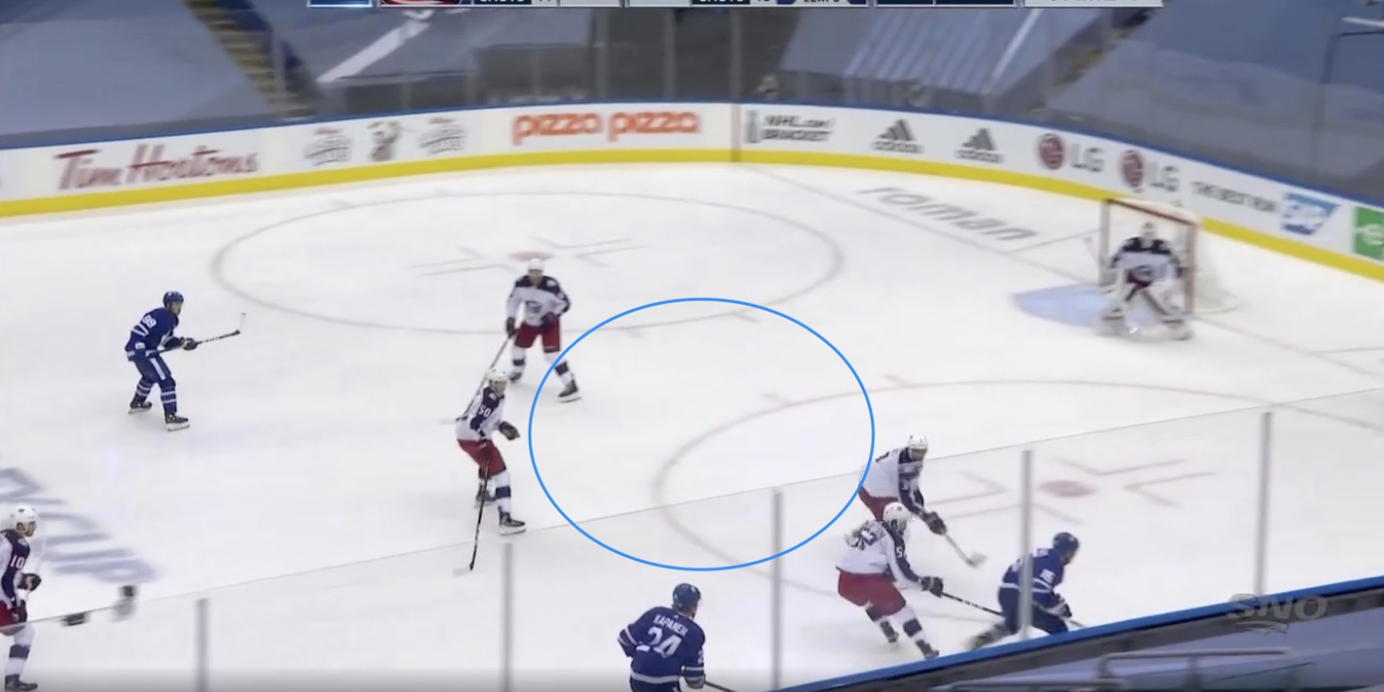
Maybe he can’t get all the way up in the play there, but even pressing the middle draws defenders toward you and away from others. Mid-lane drives have their own gravity.
Similarly, Tavares is shown here driving the puck into the zone, but he’s on his backhand and moving relatively slow. For him to complete a pass to Mikheyev in the middle would be a prayer.
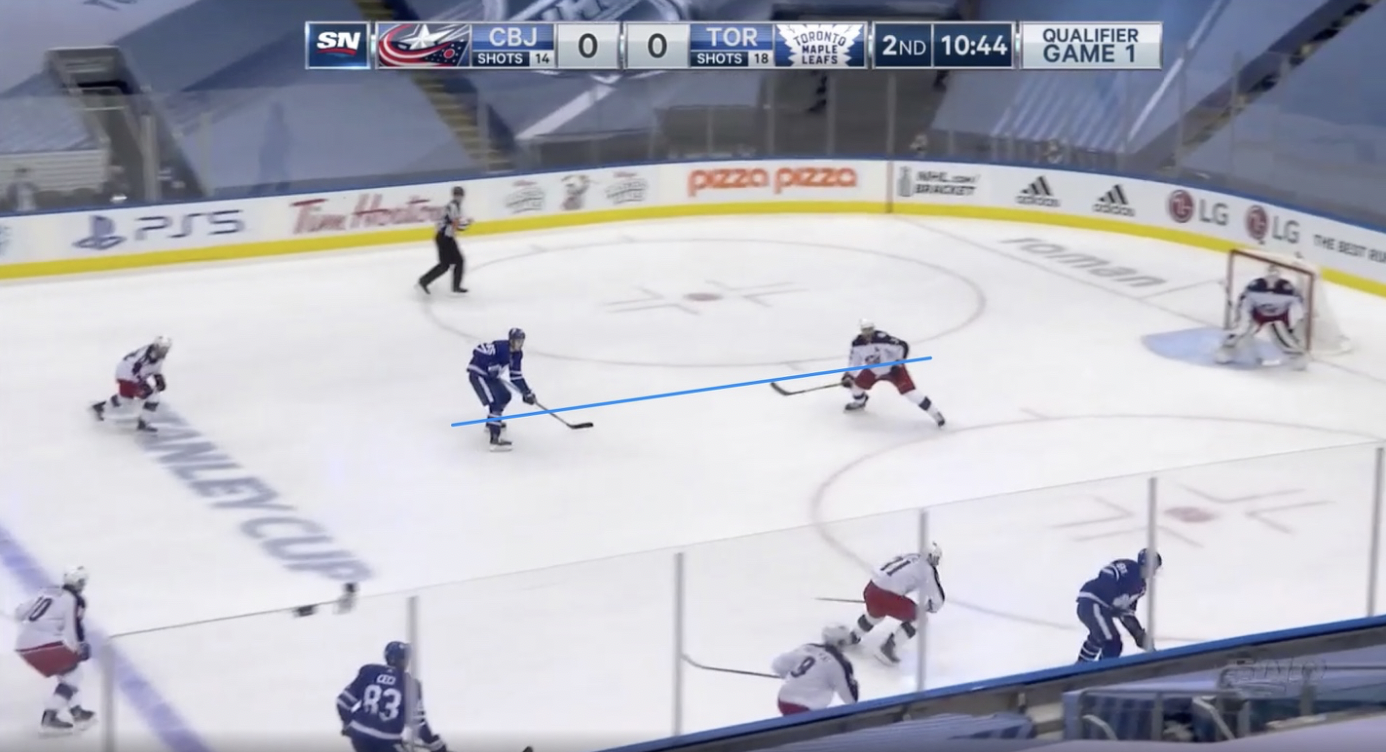
If Mikheyev comes across in short support, they can set up an O-zone possession and get to work. Mikheyev needs to be the next player after the engagement on the puck, rather than outside that.
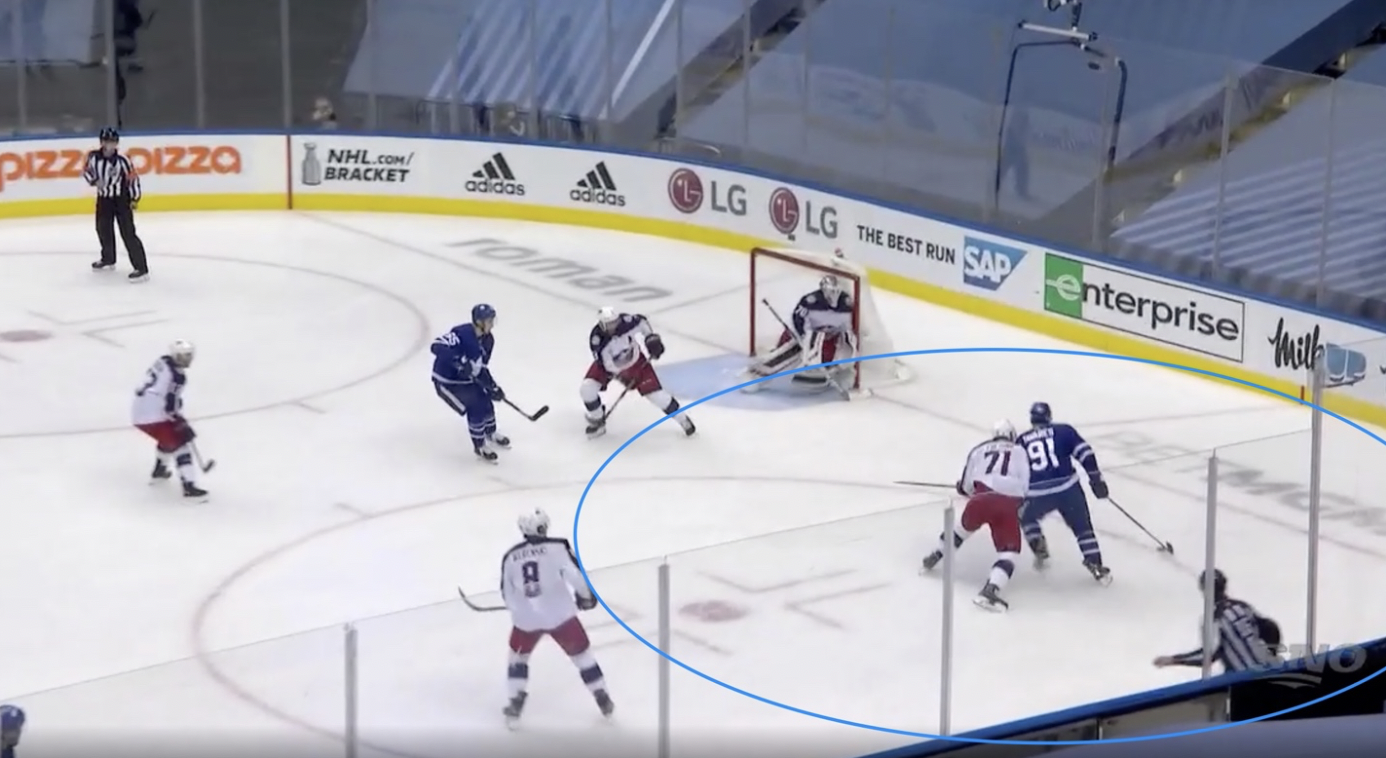
In the third clip, on the O-zone possession, the Leafs run a stand F/D scissor play, which is really everything Columbus is OK with. Sure, you can swirl around the outside if you like. But hey – that Columbus forward has no stick. If you go right at him and through to the inside, some decisions have to get made defensively (that’s true even if he did have one).
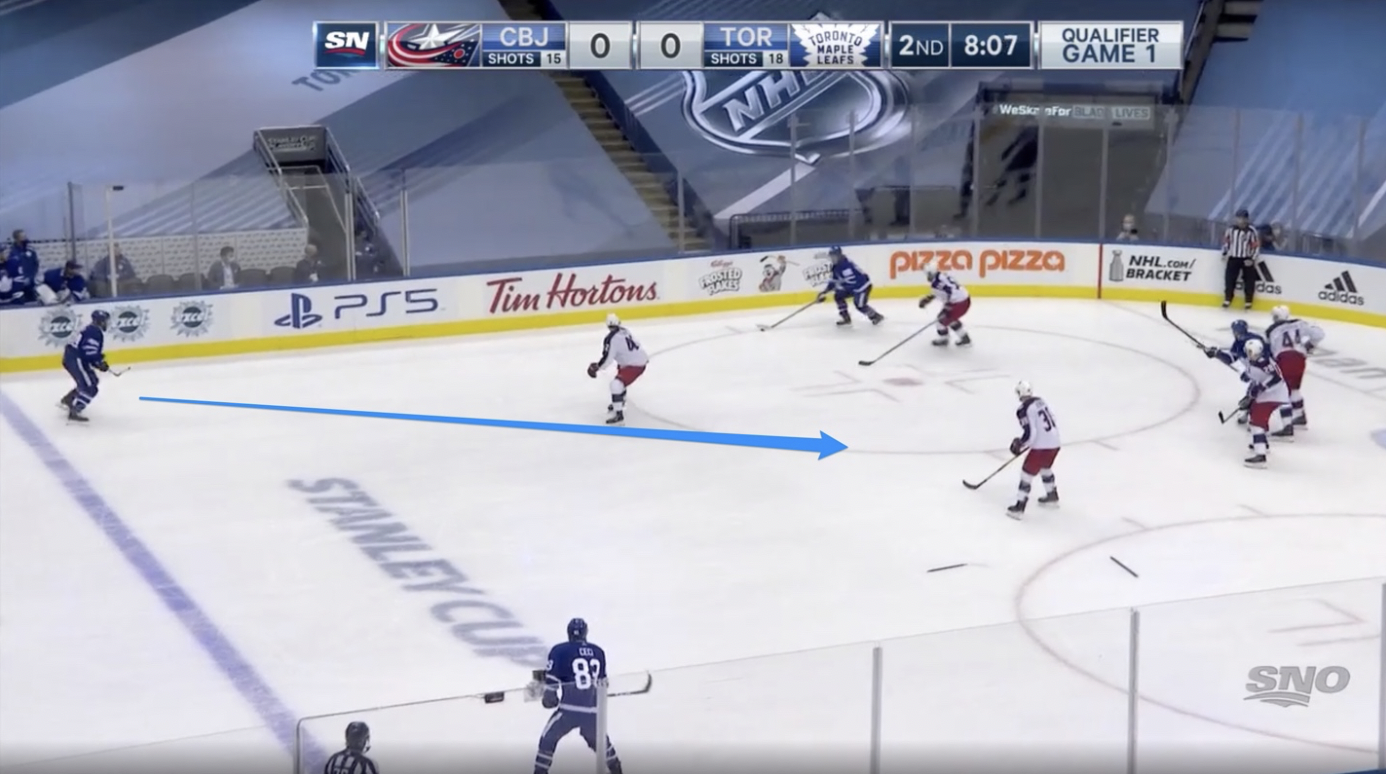
That decision is likely a stick-less winger hauling down a dangerous player and taking a penalty. Instead, the Leafs stay to the outside, allowing Columbus to remain in reasonably tight structure, with no short passing support in sight.
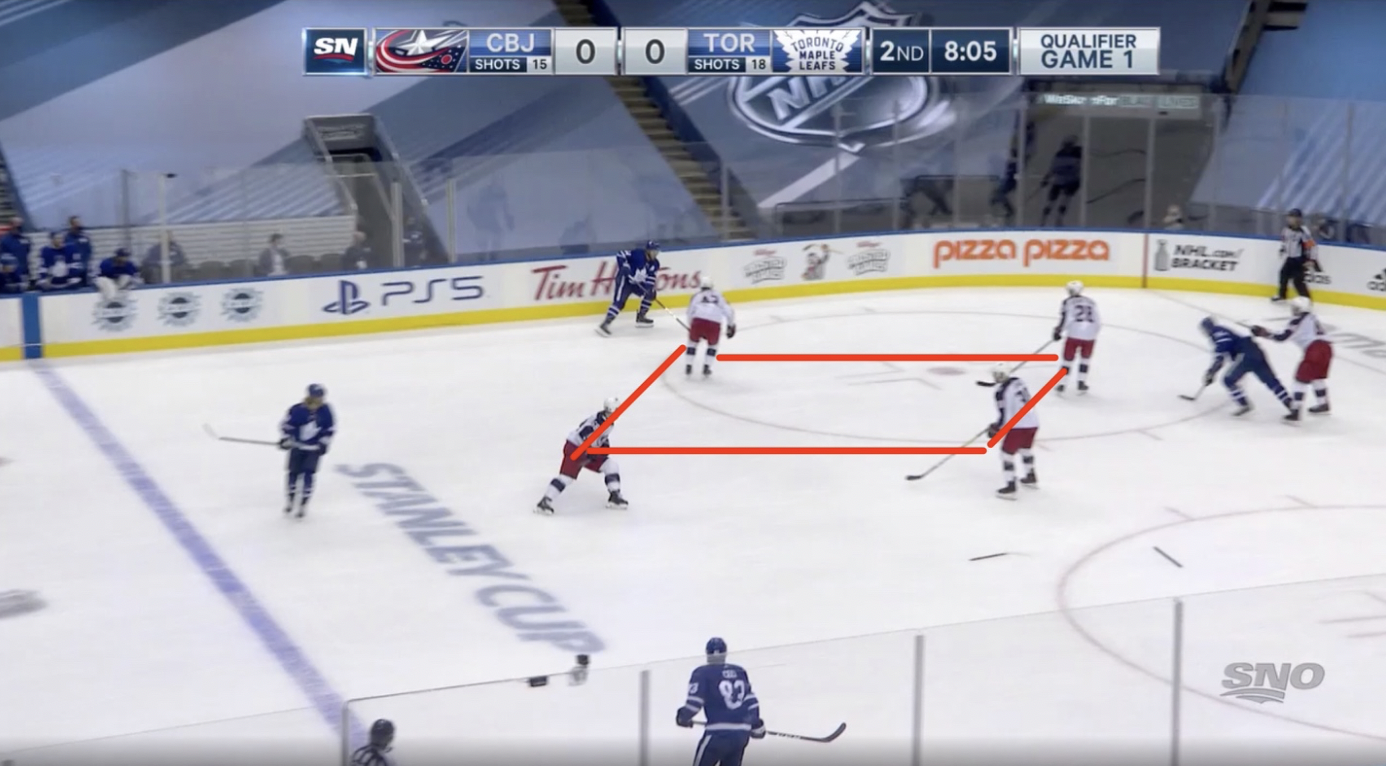
They try to make a pass through this Columbus defence, to no avail.
Had they completed that pass, I should note, Matthews was open on the back door. That’s the thing with the Leafs’ offence in Game 1. Had they been able to make the perfect play, they’d have been fine. The possibility was there. Again, that’s hope.
That sequence above starts with the below, where Matthews is alone against two Columbus defenders, and Hyman is in a really good soft spot. I say good because if Matthews can beat two guys, boy, Hyman is laughing. But Columbus defends too well and these hopeful positions without the puck just didn’t pan out in Game 1.
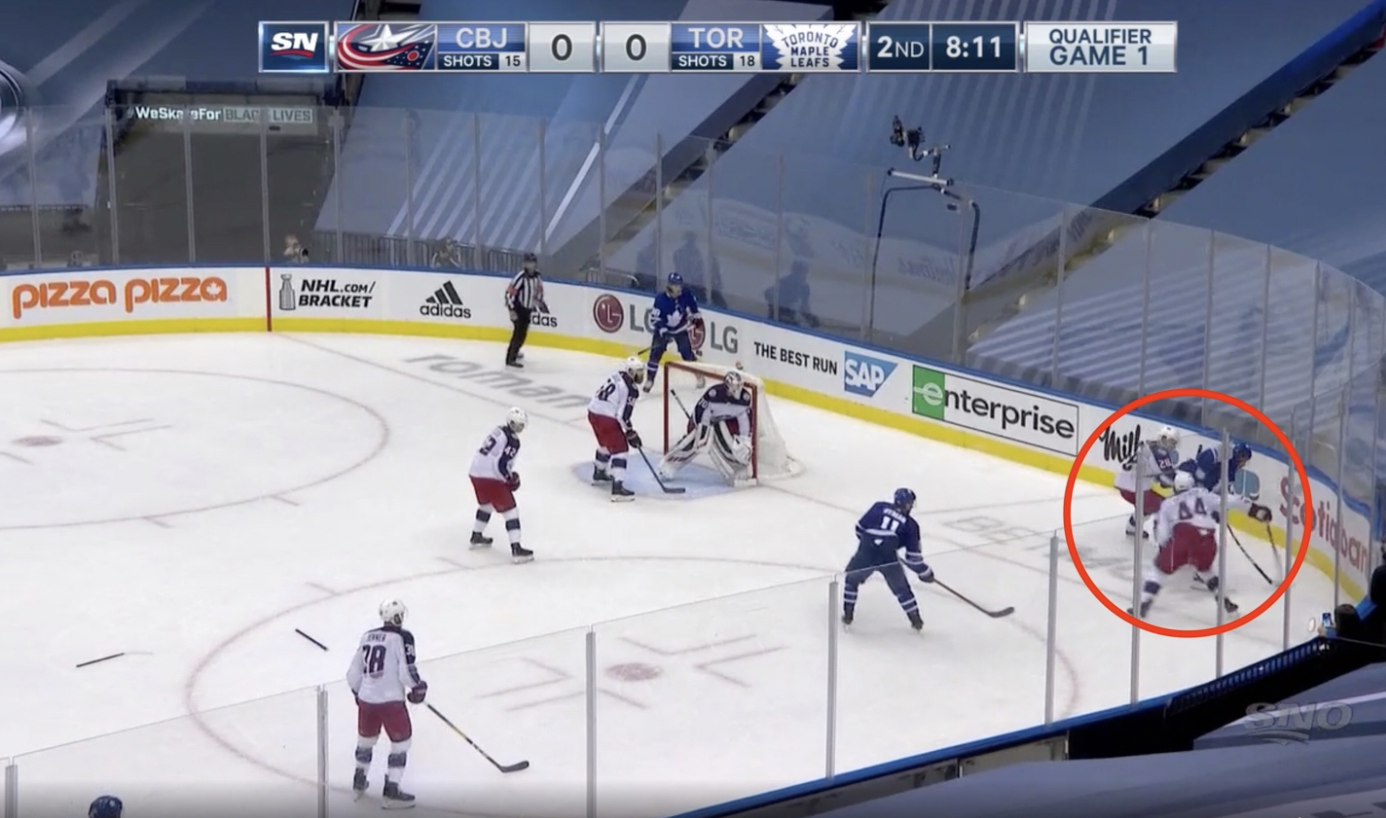
Might they work out better in Game 2? Maybe! But can you play for maybes in a five-game series that you trail 1-0?
The last clip is just more of the same with Matthews and Hyman outnumbered down low. Nylander got tangled up high, but boy, is he out of the picture for a long time. What you kind of see at the far left of this picture – what looks like F3 – is actually Tyson Barrie.
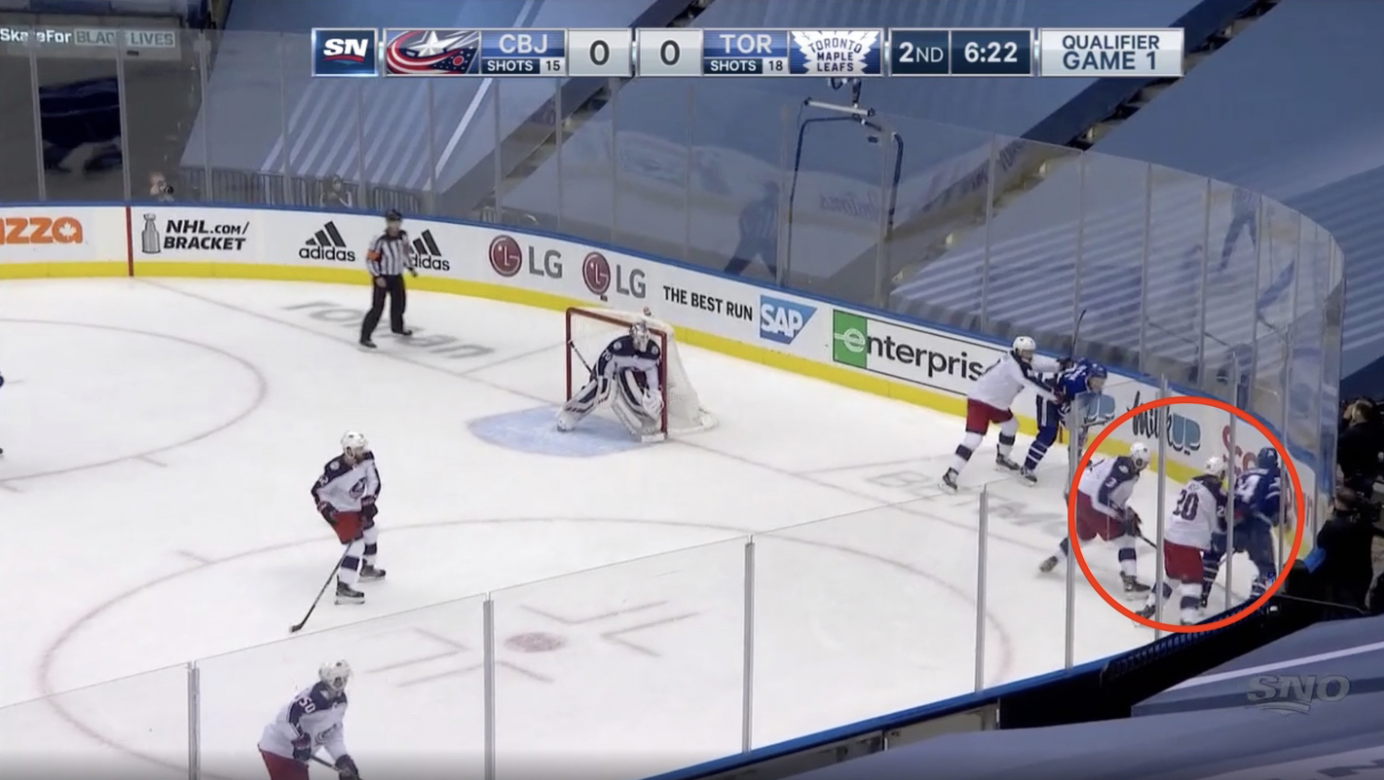
The “next” player to the puck for the Leafs was always the defender, then another Columbus player. You can live with the next guy being a defender, but the guy after that guy needs to be a Leaf player in Game 2. If breakdowns aren’t going to come, they have to find ways to extend possessions and keep prodding, hoping to find chances and wear Columbus down, or at least force them to take penalties.
The policy may still be “the only rule is it has to work” for Dubas teams, but I think you can make the case that, results aside, it largely did work in their opening game against the Blue Jackets. With a small tweak on offence, their results have a better chance at matching the success of their structure everywhere else.


